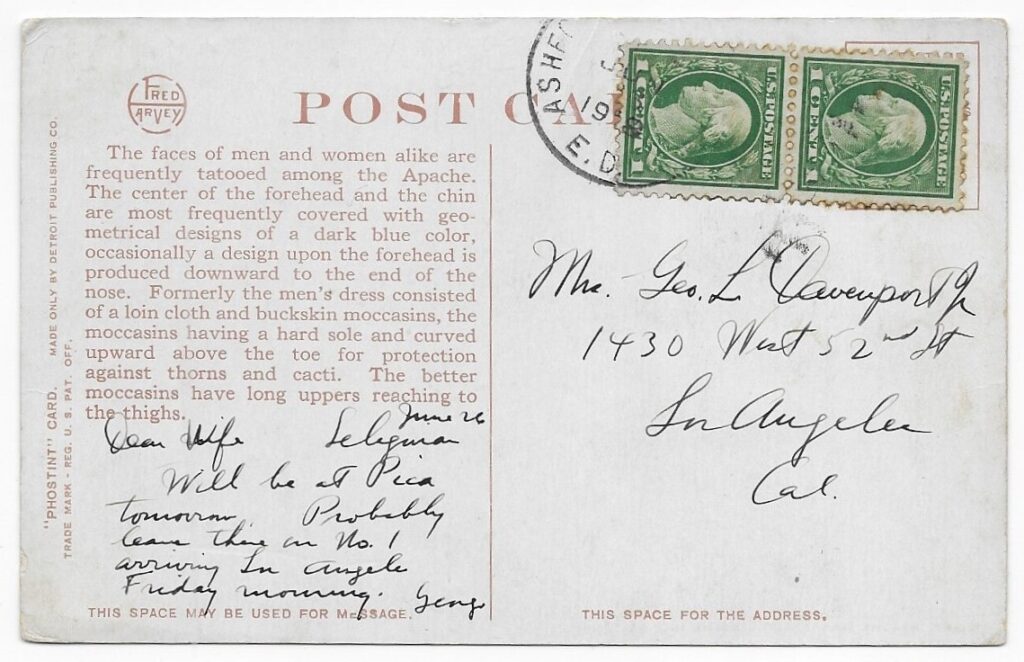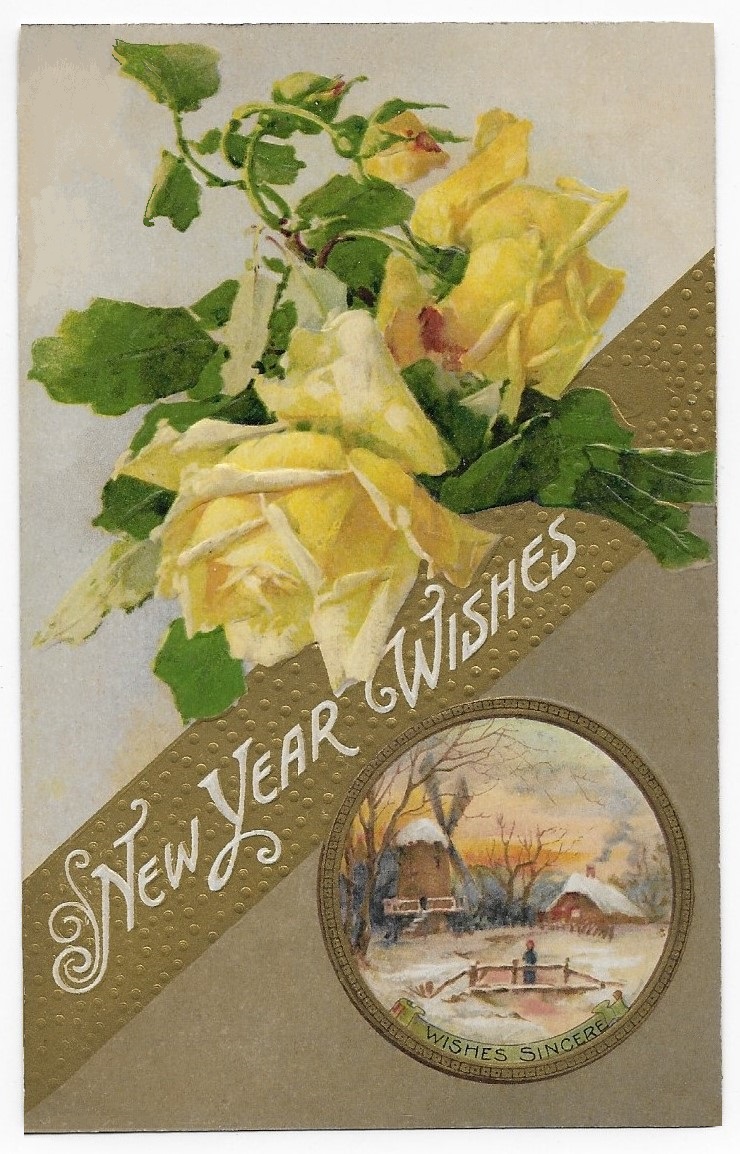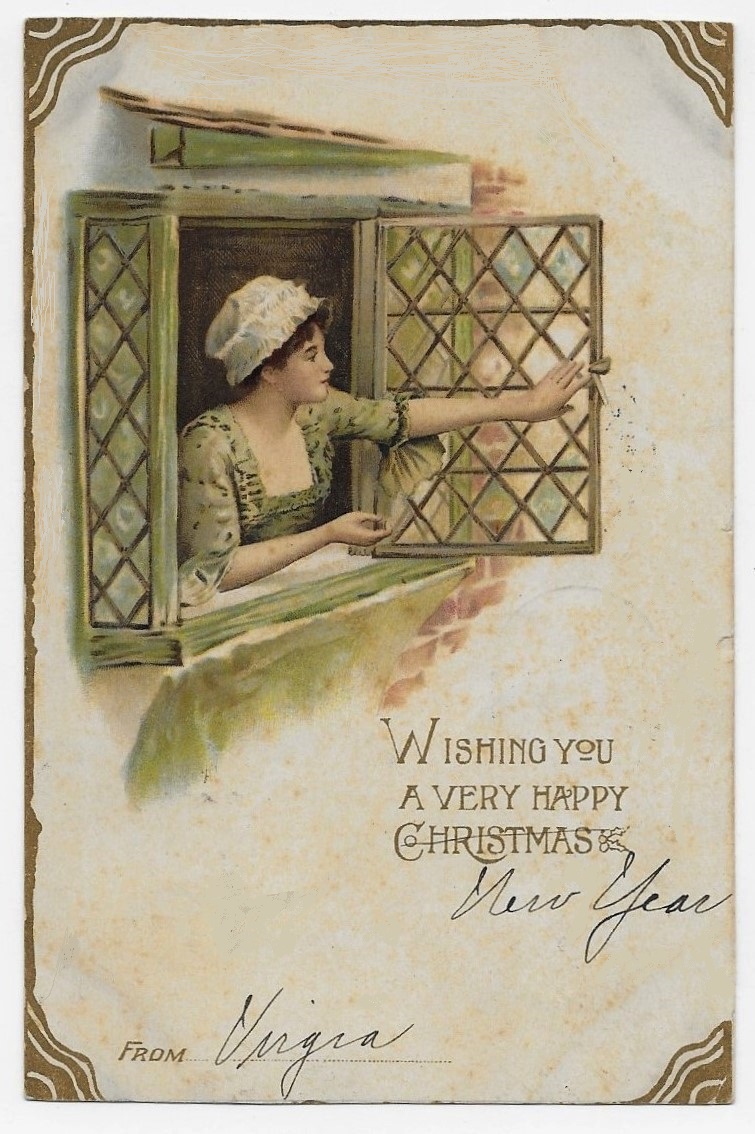Mrs. George Davenport lived in Los Angeles, the growing city on the Pacific in southern California.
The discovery of oil in the late 19th century and the completion of the city’s first aqueducts in 1913 led to a population boom.
https://en.wikipedia.org/wiki/Los_Angeles
In June if a year near 1920, Mrs. Davenport received a postcard from her husband.
(The narrow white border, and the two cents for postage, suggest the date circa 1920.)
It appears that Mr. Davenport was on an extended trip across Arizona; I believe that the postcard was mailed from Ash Fork – established as a siding of the Atlantic & Pacific Railroad (later, the Santa Fe Railroad) in 1882.
The town was once a center of quarrying and was known as the ”Flagstone Capital”.
https://en.wikipedia.org/wiki/Ash_Fork,_Arizona
The famed Route 66 highway once passed through Ash Fork, but the community today is a census-designated place of fewer than 400 residents.
https://en.wikipedia.org/wiki/U.S._Route_66
+ + + + + + +
The face of the postcard is a drawing of an Apache youth drinking from a stream.
The young man’s horse stands patiently nearby.
A long rifle rests on the pebbled ground.
https://en.wikipedia.org/wiki/Apache
This image has several unusual features – the background landscape appears to be painted, but the youth resembles a photograph from the popular movement of “life studies”.
The horse appears to be a composite image -the front does not quite meet the rear.
Despite the anomalies, the picture is striking.
The postcard was copyrighted and published by the Fred Harvey empire of western resorts.
https://en.wikipedia.org/wiki/Fred_Harvey_Company
The Fred Harvey Company operated “The Escalante”, a large hotel and “Harvey House” restaurant, in Ash Fork until 1948.
https://www.hmdb.org/m.asp?m=33499
We have seen another example of Fred Harvey advertising postcards featuring indigenous people: “The First Riding Lesson”
An extended blurb on the reverse describes Apache attire and footwear.
This attractive advertisement was printed by the Detroit Publishing Company using the trademarked “Phostint” process.
+ + + + + + +
On the reverse, George addresses his “Dear Wife”.
The good correspondence habits of Mr. Davenport communicate his location as “Seligman” – a census-designated place in Yavapai County in west-central Arizona.
Seligman remains a popular stopping place on Route 66 due to the number of surviving novelty buildings – although most automobile traffic is found on US Route 40.
https://en.wikipedia.org/wiki/Seligman,_Arizona
Seligman was the traditional homeland of the Havasupai people.
https://en.wikipedia.org/wiki/Havasupai
In his message, George reports, “Will be in Pica tomorrow.”
Pica, once a railroad stop northwest of Seligman, is now a ghost town.
https://www.theroadwanderer.net/RT66az66.htm
From Pica, George will travel to Los Angles, presumably by railroad, and arrive on Friday morning.
I cannot reconstruct George’s itinerary of Ash Fork, Seligman, and Pica conclusively – since the postcard was mailed from Ash Fork but written in Seligman.
These small communities are connected by roads and the railroad over a distance of 45 miles.
The Highway known as “Route 66” was not yet established at the time George was traveling in west-central Arizona, but the existing roads followed indigenous trails that later were connected as a national highway.





